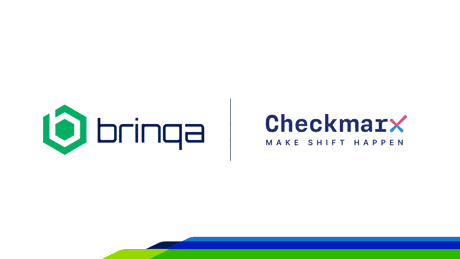Jun 15, 2023
What is Vulnerability Remediation?
by Brinqa Security Team

Vulnerability remediation is the process of identifying, assessing and resolving security weaknesses in a system or network. It is a crucial component of any cybersecurity strategy, as it helps to mitigate or prevent the impact of cyberattacks that exploit known vulnerabilities.
This post discusses why effective vulnerability remediation is important and the best practices and tools to help you carry it out.
The importance of vulnerability remediation for system security
Vulnerability remediation is important for preventing data breaches, cyberattacks, system disruptions, and compliance violations resulting from unpatched or misconfigured systems. The consequences of a successful breach also include irreparable damage to a brand’s reputation, which makes it more challenging to gain new customers or business partners.
Vulnerabilities, if left unchecked, can expose sensitive information, allow unauthorized access, compromise performance, or enable malicious actions by attackers. According to the Ponemon Institute, 60% of data breaches were caused by unpatched vulnerabilities. By remediating vulnerabilities promptly and effectively, organizations can reduce their attack surface, protect their reputation, and avoid fines and revenue loss.
Vulnerability risk management also plays a crucial role in preventing attack escalation and lateral movement. Regularly updating software, strengthening access controls, risk-based prioritization of vulnerabilities, and understanding their business impact are essential components of an effective remediation strategy that can limit the potential for these threats. According to an IBM report, identifying and containing a breach takes an average of nine months, but shortening this time can save organizations money.
Discover how Brinqa customers achieve a 201% return on investment (ROI) thanks to a streamlined remediation process and a 20-40% reduction in business interruptions.
What is the vulnerability remediation process?
The vulnerability remediation process is a systematic approach or workflow for addressing vulnerabilities or weaknesses in an organization’s IT infrastructure, software applications, and other digital assets.
As enterprise attack surfaces expand and new software development processes become mainstream, security teams must contend with vulnerabilities across their entire IT and development infrastructure. This includes the cloud, applications and on-premises systems. As a result, many organizations follow the cyber risk lifecycle (or vulnerability lifecycle) to continuously manage risk across all environments. Modern teams, however, are working to unify this process to span across security programs.
The modern vulnerability remediation process typically involves these steps:
- Discover: Identify vulnerabilities through scanning and testing tools that can detect known or unknown flaws in software, hardware or configuration settings.
- Prioritize: Classify and rank vulnerabilities based on their severity, impact, exploitability, and business context. You may use a standardized scoring system, such as the common vulnerability scoring system (CVSS), to communicate the risk level of each vulnerability. Unfortunately, CVSS scores alone can’t reflect the actual risk of a vulnerability for your specific environment and relying on these scores alone may result in false positives.
- Remediate: Implement solutions to fix or mitigate vulnerabilities, such as applying patches, upgrading software, changing passwords, disabling services, or isolating systems. Follow best practices and guidelines from vendors, experts or standards bodies to ensure effective and secure remediation. (It’s also important to note that the process of creating the remediation ticket is cumbersome for most organizations. This process can be streamlined to reduce MTTR by reducing the operational friction in this process.)
- Verify: Track the progress and status of remediation activities, verify that vulnerabilities are resolved or reduced and monitor for recurring vulnerabilities.
- Report: Use automated tools and alerts to stay updated and informed about the security posture of your IT environment. According to Panaseer, 89% of CISOs expressed concern about needing more visibility into trusted data.
| Remediation steps | Effective implementation |
|---|---|
| Vulnerability data and identification | Implement regular vulnerability scanning using reputable tools and stay up-to-date with threat intelligence sources. |
| Risk assessment and prioritization | Assess affected asset criticality and exposure, and prioritize vulnerabilities based on potential impact. |
| Assignment of remediation tickets | Use an automated, rule-based ticketing system for creating, managing and closing remediation tickets. The system also should support dynamic ownership assignment, SLA enforcement, and integration with existing ITSM processes. |
| Remediation planning and implementation | Allocate resources to address high-priority vulnerabilities first. Apply patches and updates from verified sources or implement workarounds or mitigation measures when patches are not immediately available. |
| Verification and validation | Test and confirm the effectiveness of patches and mitigations. |
| Documentation and reporting | Document all remediation actions and maintain a report for audits. |
Vulnerability remediation: Best practices
According to Edgescan, the mean time to remediation (MTTR) for critical vulnerabilities across the full stack (the complete set of technology layers or components being used) is 65 days. This statistic is worrisome because, according to the Cybersecurity and Infrastructure Security Agency (CISA), threat actors can now exploit a vulnerability within 15 days of discovery.
Here are the best practices to optimize your remediation process and reduce MTTR:
-
- Take a risk-based approach to prioritization: Organizations should adopt a risk-based approach to vulnerability prioritization. This method involves identifying, categorizing and prioritizing vulnerabilities based on their exploitation’s potential business impact and likelihood. Classify vulnerabilities into severity categories and track the MTTR and SLAs separately. For instance, critical vulnerabilities should have faster MTTRs and shorter SLAs than the high or medium-severity category.
- Automate vulnerability remediation: By leveraging automated tools and technologies, businesses can reduce the time and resources required to remediate vulnerabilities and minimize the risk of human error. Automation through patch management tools also helps ensure that security patches and updates are applied consistently across the organization’s digital infrastructure.
- Adopt a DevSecOps approach: Integrating security into the software development lifecycle (SDLC) ensures that vulnerabilities are identified and remediated early on. Adopting a DevSecOps approach promotes a culture of collaboration between development, operations and remediation teams, resulting in more secure software.
- Collaborate with all stakeholders: The remediation process involves multiple departments and personnel, from C-suite to developers and external partners. Security must be a shared responsibility between all stakeholders, and organizations should establish a cross-functional team to oversee the entire process.
- Ensure compliance with regulations and standards: By aligning vulnerability remediation efforts with compliance requirements, businesses can avoid potential legal and financial repercussions and demonstrate their commitment to maintaining a secure digital environment.
- Measure and report on the progress of remediation efforts: Key performance indicators (KPIs) should be established to measure the success of the remediation process. Regular reports should be shared with stakeholders to maintain transparency and accountability. By closely monitoring remediation progress, organizations can identify areas for improvement and ensure that their cybersecurity efforts are aligned with business objectives.
Automated vulnerability remediation technologies for enterprise cybersecurity
The Brinqa Attack Surface Intelligence Platform is an all-encompassing cyber risk management solution designed to streamline and enhance the cyber risk lifecycle, which includes the vulnerability remediation process. The platform first collects and normalizes data from multiple sources to create a unified vulnerability inventory. Utilizing risk models and business context, the platform then effectively prioritizes vulnerabilities, allowing for targeted remediation efforts.
Additionally, it orchestrates the remediation ticketing process and workflows tailored for specific teams and tools and closely monitors the progress for vulnerability remediation tracking. Brinqa syncs bi-directionally with ITSM systems, such as Jira or ServiceNow, and tracks whether or not tickets are closed or still open. Finally, organizations gain valuable insights into their vulnerability risk landscape and remediation performance through highly configurable dashboards and reports, creating a more secure and resilient digital environment.
Discover how Brinqa can protect your organization’s systems and assets. Request a demo to speak with one of our engineers.
Frequently asked questions
When is a vulnerability considered remediated?
A vulnerability is considered remediated when it has been fixed, patched or mitigated so it no longer poses a risk to the system or network. Remediation may involve updating software, changing configurations, applying security policies, or removing malicious code. Remediation should be verified by testing and scanning to ensure the vulnerability has been eliminated.
Why is vulnerability remediation important?
Remediating vulnerabilities is important because it reduces the likelihood of cyberattacks, data breaches, and compliance violations. Vulnerability remediation also helps protect the confidentiality, integrity and availability of information and services.
Who is responsible for vulnerability remediation?
The responsibility for vulnerability remediation depends on the type and severity of the vulnerability, as well as the roles and policies of the organization.
Generally, developers are responsible for fixing vulnerabilities in their own code, while system administrators are responsible for applying patches and updates to the systems they manage. However, some vulnerabilities may require coordination and collaboration between different teams or departments, such as security, compliance, legal or business units.
What is the difference between vulnerability remediation and vulnerability mitigation?
Vulnerability remediation means fixing or eliminating the vulnerability and addressing the underlying cause. Vulnerability mitigation is a temporary solution to reduce risk while a patch or remediation solution becomes available. In most cases, mitigation is only a short-term measure.

